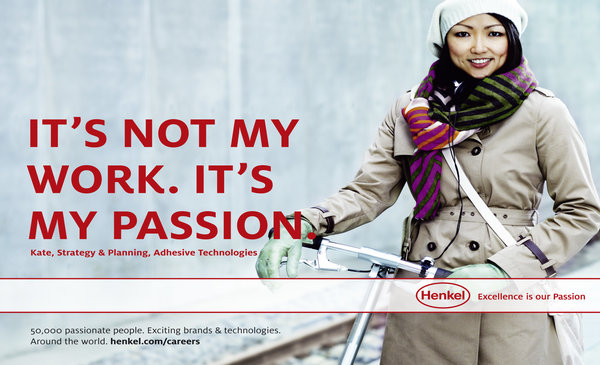In a recent post, I attempted to clarify what branding is all about. It comes down to building perceptions about what makes your product different and what the benefit is in this difference.
Now for the bad news: Building a brand is often easier than keeping it from being destroyed by internal forces.
This destruction often happens because of the pressures that financial guys put on an organization. To make the numbers that management wants them to make, people start to do things that begin to unravel a brand.
To ratchet up more business, the organization starts to lose focus on what makes it unique. They do things that erode the core brand. They chase business they shouldn’t chase, such as Marlboro trying to sell menthol cigarettes or Cadillac trying to sell small Cadillacs. Sometimes, they create a sub-brand, thinking it will give their new effort some legitimacy, as in the case of Holiday Inn Crowne Plaza. The customers thought that the Crowne Plaza version was a little too expensive for a Holiday Inn. It never flew.
It’s easy to see the problems of trying to go up-market with a down-market brand, but what about the reverse? That can be good news and bad news.
Waterford Crystal is trying that with Marquis by Waterford. The more successful the cheaper crystal becomes, the more it will erode the expensive Waterford brand. The same goes for Mercedes. The more cheap models it pushes, the more it will erode the prestige of the bigger, more expensive Mercedes. A brand is a promise. It creates expectations that the product has to deliver.
You might ask, “Can a brand be marketed in more than one form or model?”
Sure, as long as the different forms or models don’t detract from the essence of the brand or the concept that makes it different from other brands. If Volvos are safe, tanky looking cars, a convertible version makes no sense in the mind of a customer. If Nike is what the world’s best athletes wear, a Nike golf ball doesn’t make much sense. You certainly can’t wear it. What’s saved them is that to many people, it’s the ball that Tiger Woods uses. A Tiger Woods golf ball has sold a whole lot better than a Nike golf ball.
Many ask me: Why do these kinds of decisions get made?
The answer is greed.
Quite often, new management arrives and, encouraged by Wall Street, they push the brand beyond where it should be pushed. Consider the latest marketing pronouncement from Volvo. It is asking agencies to take its advertising beyond “safety.” The company’s claim: “Safety is not enough.” Wrong. Safety is what Volvo is all about, and it’s letting Japanese carmakers take the lead in electronic safety innovation. Volvo has got to get better at safety, not shift to emotion or some other vague non-differentiating idea.
This leads me to the final question: How do you avoid losing focus and undermining your brand?
Giving up something can be good for your business. When you study categories over a long period of time, you can see that adding more can weaken growth, not help it. The more you add, the more you risk undermining your basic differentiating idea. Sacrifice comes in three forms.
- Product sacrifice, i.e. staying focused on one kind of product. Duracell on alkaline batteries. KFC on chicken. Southwest Airlines on short-haul air travel.
- Attribute sacrifice, i.e. staying focused on one kind of product attribute. Volvo on safety. Dell on selling direct. Papa John’s International on better ingredients. Your product might offer more than one attribute, but your message should be focused on the one you want to preempt.
- Target market sacrifice, i.e. staying focused on one segment of the market. DeWalt for professional tools. Pepsi for the younger generation. Corvette for the generation that wants to be young. If you chase another segment, chances are you’ll chase away your original customers.
So there it is in simple terms. Branding is putting a brand in the consumer’s mind along with its point of difference. The trick is to stay focused on what the brand stands for and not get greedy with it.
The Blake Project Can Help: The Brand Positioning Workshop
Branding Strategy Insider is a service of The Blake Project: A strategic brand consultancy specializing in Brand Research, Brand Strategy, Brand Licensing and Brand Education





3 comments
Adam Kranitz
August 23, 2007 at 10:03 am
Great post Jack. I’ve also found the drive to push brands down market don’t always start at the top with new executive management.
Very often consumers themselves are clamoring for accessibility to luxury brands via lower cost “knock offs”. Manufacturers are forced to mass produce lower-quality “down market” versions, just to stem the tide of money that would otherwise flow into imported knock offs.
Is this greediness on the part of management or brand defense?
Ruri ::online business course
August 24, 2007 at 3:26 am
I believe the word focus on our core business is better to say than to say sacrifice. I Agree with you, in business we need to focus on what our mission is in business.
Therefore we need to create a specific mission and vision before we develop a business.
Ted Grigg
August 25, 2007 at 12:40 pm
I agree with you that financial pressures have killed many brands.
In public companies (and often with second or third generation family owned businesses), the brand does not pump out enough revenue to keep the shareholders happy. So management creams the business in unhealthy ways leaving a weakened brand.
Perhaps another way to view the solution to this problem is to focus not so much on the brand, but rather on serving the customer first and secondarily the shareholder.
This approach gets to the root of the problem because a company’s brand reflects the company’s relationship with its customers.
I think that shareholder and customer needs often collide causing incongruity that bleeds away the brand’s long term money-making capability.
Comments are closed.